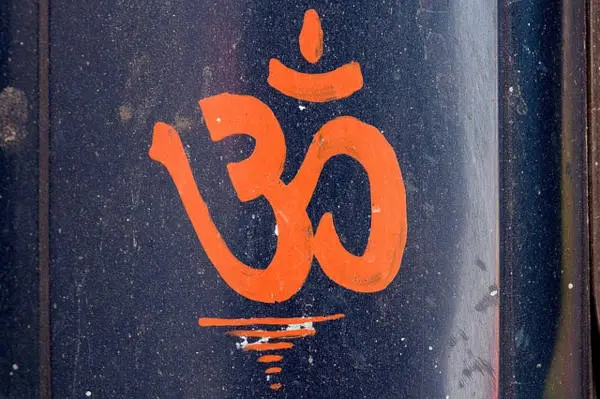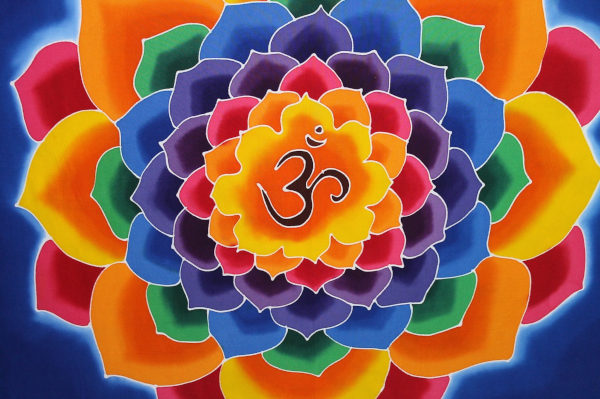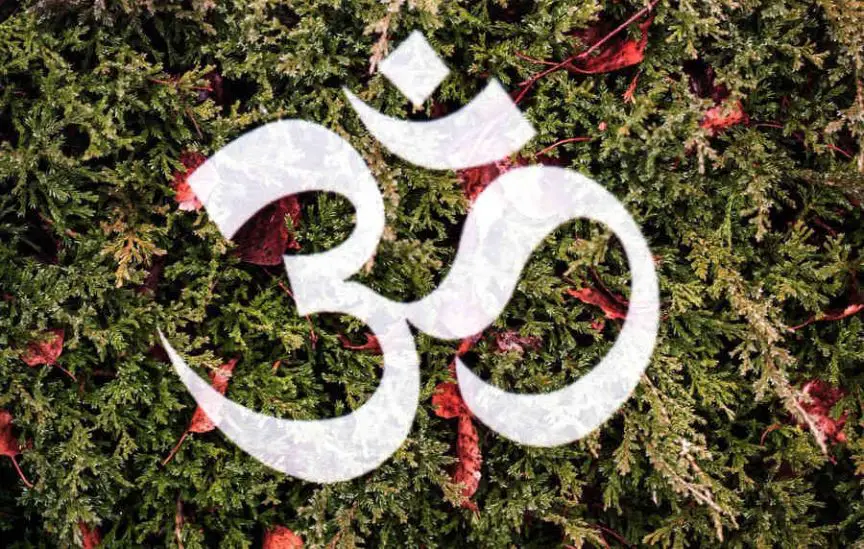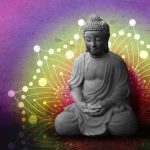It’s no secret that meditation is becoming more and more popular in the Western world, with more people looking to find inner peace and stress relief.
Mantra meditation, or chanting meditation, is one type of meditation technique that is also rapidly gaining popularity all over the world. In this article, we will discuss all you need to know about Mantra Meditation: its origin, how to do it, and its benefits for your physical and mental wellbeing.
What Is Mantra Meditation
Mantra meditation practice, as the name suggests, is a meditation method where the practitioner utters a repetitive mantra (a process called Japa). Thus, this meditation method is centered on finding balance and serenity of the mind by focusing on the repetition of sound or vibration.
Doing Japa continuously will root your mind and refine your inner consciousness to a refined level. The idea is that when Japa becomes your second nature, your body will vibrate a harmonizing echo aligning your body, mind, and spirit in a single frequency. If you keep constant harmonization in your meditation, eventually you’ll get better physical well-being, comfort, calmness, and a peaceful mind, which in turn can improve your overall quality of life.
You can perform Japa by chanting, singing, or even humming mantra in your meditation routine, and there are various forms of mantra that you can learn and use; some are long, and some are very short. However, the basic principle remains the same: repeating your mantra to consolidate your mind and increase your inner balance.
How Mantra Meditation Works?
The core of mantra meditation, as discussed above, is Japa, the practice of repeating (chanting) your mantra. There are no restrictions when it comes to Japa in mantra meditation: you can chant your mantra out loud or you can keep it inside your head, the important thing is to keep repeating the mantra. Focus on the repetition and eventually, you’ll enter a deeper meditation state.
The mantra you utter will help your mind experience a soothing sensation, while also increasing your perception. The harmonious sound that is created from the mantra meditation will help unite your spirit energy, allowing you to detach from your worldly views and temporarily let go of the problems that hold you down.
Mantra meditation can also help to open your chakra points, keeping the balance of your chakra energy in check.

Benefits of Mantra Meditation
Practicing mantra meditation can be effective in providing the following benefits:
- Relieving anxiety and depression
This research has suggested that practicing mantra meditation can help you calm your mind to relieve your anxiety and depression. Many patients have shown improvements in their psychological state just by practicing Mantra meditation.
- Promoting a positive emotion
Another research indicates that practicing Mantra meditation can help provides the practitioner with positive emotion, and increase the capacity to cope with a stressful situation. According to this research, Mantra meditation can be used as a coping mechanism to help improve the quality of well-being.
- Easing joint pain
Based on this research observing senior citizens with knee problems, Mantra meditation has been shown to be effective in treating joint pain. In this research, the participants performing Mantra meditation have improved their overall health, reducing their knee pain, and improving the sleep quality and walking abilities.
- Enhancing brain function
It’s possible that the brain function will increase when you put Mantra meditation as your daily activity. The results of this research indicate that there is a significant increase in the right temporal lobe and posterior cingulate gyrus, which indicates positive improvements in brain functions.
- More relaxed nervous system
The nervous system is a part of the human body that can be agitated easily. If your nervous system is tensed, it will strain your body, and you will feel exhausted all the time. This research has suggested that a single syllable of mantras can help you to relax every nerve in your body. The research indicates that there is vague nerve stimulation after the “Aum” (read: Om) mantra chanting, and a similar effect can be observed when treating depression and epilepsy patients.
Another research also indicates that the Aum’ words can also reduce the stress level in your system.
Do you want to learn more about Meditation? Check out our recommendations at “Meditation Bookshelf” and many free resources at our “Free MeditationLibrary“ – Opens in new tab
Types of Mantra in Mantra Meditation
Although there are various forms of mantras available to use in your mantra meditation, we can generally divide them into three main types:
Bija mantra
Bija mantra, or “seed” mantra, consists of only one syllable for you to utter. There is one Bija mantra for each chakra, for example, the mantra “Vam” for sacral chakra and “Ram” for solar plexus chakra, and there are also bija mantras correlating to the main Hindu deities. Bija mantras can be used on their own or in combination with Saguna mantras as the “seed”.
Saguna mantra
These are mantras that are directed to a deity, or if you are practicing monotheistic religion, chanting the name of God, Christ, or Allah can also be considered a Saguna mantra. However, the traditional practice in Hinduism is to take materials from the Vedas and Puranas as Saguna mantras.
Nirguna mantra
Also originated from Vedic texts, but the mantra isn’t designed to invoke deities or personalized aspects of God, and so they are more abstract, considered to not have a specific meaning or form to them. The classic “Aum” (read: Om) mantra, is the most famous example of a Nirguna mantra.

How To Choose a Mantra
With the three different types of mantra (as discussed above), and many more forms to choose from, choosing the right mantra that best suits your needs can be a challenging matter.
As a general principle, the mantra you choose should be the one that provides a positive resonance when you chant it. As long as the mantra can help you focus into a deep meditation state, then it is a suitable mantra for you.
Here are some tips you can use to help you choose your mantra:
Know your needs
Assess your emotional state: are you currently anxious, fearful, angry, stressed, and so on. By self-analyzing your own emotion, you can better understand your state of mind. If your mind is full of anger, for example, then you should look for a mantra that can counter it. On the other hand, if you feel depressed, then you can choose a mantra that brings happiness. This way, you can make sure your mantra is effective for your situation.
Use your intuition
Sometimes, using your intuition can be the better approach. For example, you may feel that shorter mantras can help you concentrate better, while others may feel that longer mantra tends to be more effective. In the end, you should choose a mantra that feels right for you.
Test your mantra
Still related to the above tip, there’s no better way to know if your mantra is the right choice unless you test it. Give your mantra a trial period, for example after four or five meditation sessions. You can either say it out loud, repeat the words in your head, or whisper it slowly to try how your mantra works for you.

How To Do Mantra Meditation
Practicing the mantra meditation is actually not that hard, and here are the steps to follow:
- The first thing to do is to prepare all the necessary things: mattress, scented candle, room, and so on. Be as prepared as possible so you can focus on your meditation instead.
- After you are in a comfortable environment, choose the mantra to repeat in your meditation session.
- Assume a meditation sitting posture, and relax your body. If stretching helps you relax, then you can stretch before sitting down.
- Take several deep breaths to ease your breathing, then try to focus on your breath. Do this until you feel the tension is gone, then breathe gently. Focus on settling and calming your mind.
- Chant your mantra whether out loud, in your head, or whisper it quietly. You can start slowly, and after two or three iterations your mind should be more focused. Then, you can increase your chanting speed.
- Try to set your meditation time from 5-30 minutes, you can start with 5 minutes if this is your first session. You can increase the time as you get more comfortable.
- Take a deep breath before opening your eyes as your meditation ends.

Mantra Meditation VS Mindfulness Meditation
Mindfulness meditation is another popular form of meditation that guides the practitioner to get inner peace and calmness, but there is an important difference between Mantra meditation and mindfulness meditation in how the practitioner achieves this inner peace.
In mindfulness meditation, we focus on what’s going on in our mind and the stimuli around us, and we achieve inner peace by observing and accepting all of these thoughts and experiences.
In mantra meditation, as discussed, inner peace and focus are achieved by focusing on the repetition of the mantra.
Thus, in mindfulness, we are using self-reflection and vision for the meditation, but in mantra meditation, we are relying on the power of sound or vibration to relax our minds.
Do you want to learn more about Meditation? Check out our recommendations at “Meditation Bookshelf” and many free resources at our “Free MeditationLibrary“ – Opens in new tab
Stay in Touch
 Join our newsletter by using the forms on this website or click here!
Join our newsletter by using the forms on this website or click here! Follow us on Google News
Follow us on Google News Follow us on Facebook
Follow us on Facebook
Featured Image by Benjamin Balazs from Pixabay






